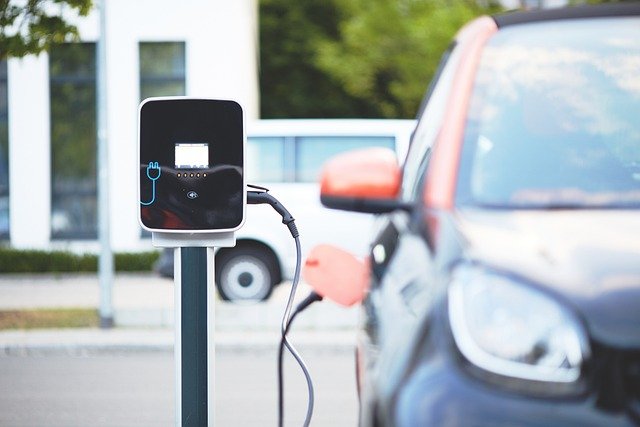Harnessing the Power of Supercapacitors in Automotive Engineering
The automotive world is on the brink of a revolutionary shift, and supercapacitors are at the forefront of this transformation. These high-capacity energy storage devices are poised to reshape vehicle performance, efficiency, and sustainability. As we delve into the world of supercapacitors, we'll explore their potential to overcome limitations of traditional batteries, enhance regenerative braking systems, and pave the way for lightning-fast charging times. Buckle up as we accelerate into the future of automotive technology.

The Science Behind Supercapacitors
At their core, supercapacitors, also known as ultracapacitors, are energy storage devices that bridge the gap between conventional capacitors and rechargeable batteries. Unlike traditional capacitors, supercapacitors can store an enormous amount of energy relative to their size, making them ideal for automotive applications where space is at a premium.
The key to a supercapacitor’s impressive capabilities lies in its structure. These devices consist of two electrodes separated by an electrolyte, with an ion-permeable membrane between them. When charged, ions in the electrolyte form an electric double layer at the electrode interface, allowing for rapid energy storage and release. This unique construction enables supercapacitors to charge and discharge much faster than conventional batteries, withstand hundreds of thousands of charge cycles without significant degradation, and operate efficiently across a wide temperature range.
Supercapacitors vs. Traditional Batteries
While lithium-ion batteries have long been the go-to power source for electric and hybrid vehicles, they come with inherent limitations. Supercapacitors offer several advantages that could complement or potentially replace traditional battery systems in certain automotive applications.
First and foremost is charging speed. Supercapacitors can be fully charged in a matter of minutes or even seconds, compared to the hours required for most battery systems. This rapid charging capability could revolutionize the refueling experience, making it as quick and convenient as filling up a gas tank.
Supercapacitors also excel in power density, meaning they can deliver large amounts of energy quickly. This characteristic makes them ideal for applications requiring burst power, such as acceleration or hill climbing. Moreover, supercapacitors maintain their performance over a much wider temperature range than batteries, ensuring consistent operation in extreme climates.
Lastly, the longevity of supercapacitors is impressive. While most lithium-ion batteries begin to degrade after a few thousand charge cycles, supercapacitors can withstand hundreds of thousands of cycles with minimal capacity loss. This durability could significantly extend the lifespan of vehicle power systems and reduce long-term maintenance costs.
Enhancing Regenerative Braking Systems
One of the most promising applications for supercapacitors in vehicles is in regenerative braking systems. These systems recover kinetic energy during deceleration, typically converting it to electrical energy for storage. However, the rate at which this energy can be captured and stored is often limited by the charging capabilities of traditional batteries.
Supercapacitors, with their ability to rapidly absorb and release large amounts of energy, are ideally suited for this task. By integrating supercapacitors into regenerative braking systems, automakers can capture a significantly larger portion of braking energy, improving overall vehicle efficiency.
This enhanced regenerative braking could be particularly beneficial in stop-and-go traffic or for vehicles that frequently start and stop, such as delivery trucks or buses. The energy recovered during braking could then be quickly deployed for acceleration, reducing the load on the primary power source and extending range.
Improving Start-Stop Systems
Start-stop systems, which automatically shut off the engine when a vehicle comes to a stop and restart it when the accelerator is pressed, have become increasingly common in modern vehicles as a fuel-saving measure. However, the frequent cycling can put a strain on traditional battery systems and starters.
Supercapacitors offer a solution to this challenge. Their ability to deliver high power output makes them ideal for providing the quick burst of energy needed to restart an engine. Moreover, their rapid charging capability allows them to quickly recover energy during brief stops, ensuring they’re always ready for the next start cycle.
By incorporating supercapacitors into start-stop systems, automakers can improve the reliability and efficiency of these fuel-saving features while reducing wear on other vehicle components.
The Road Ahead: Challenges and Future Developments
While the potential of supercapacitors in automotive applications is exciting, there are still hurdles to overcome before widespread adoption becomes a reality. One of the primary challenges is energy density. Although supercapacitors excel in power density, they still lag behind lithium-ion batteries in terms of the total amount of energy they can store per unit volume or mass.
Researchers and engineers are actively working to address this limitation. Promising developments include the use of advanced materials like graphene to increase energy density, and the creation of hybrid systems that combine the strengths of supercapacitors and traditional batteries.
Another area of focus is cost reduction. Currently, supercapacitors are more expensive than conventional batteries on a per-watt-hour basis. However, as production scales up and new manufacturing techniques are developed, costs are expected to decrease significantly.
Looking ahead, we can anticipate seeing supercapacitors playing an increasingly important role in automotive design. From enhancing the performance of hybrid and electric vehicles to enabling new energy management strategies in conventional combustion engine cars, these powerful devices are set to drive the next wave of innovation in the automotive industry.
As we accelerate into this new era of automotive technology, supercapacitors stand poised to redefine our expectations of vehicle performance, efficiency, and sustainability. The road ahead is charged with potential, and the journey promises to be an exciting one for auto enthusiasts and everyday drivers alike.





